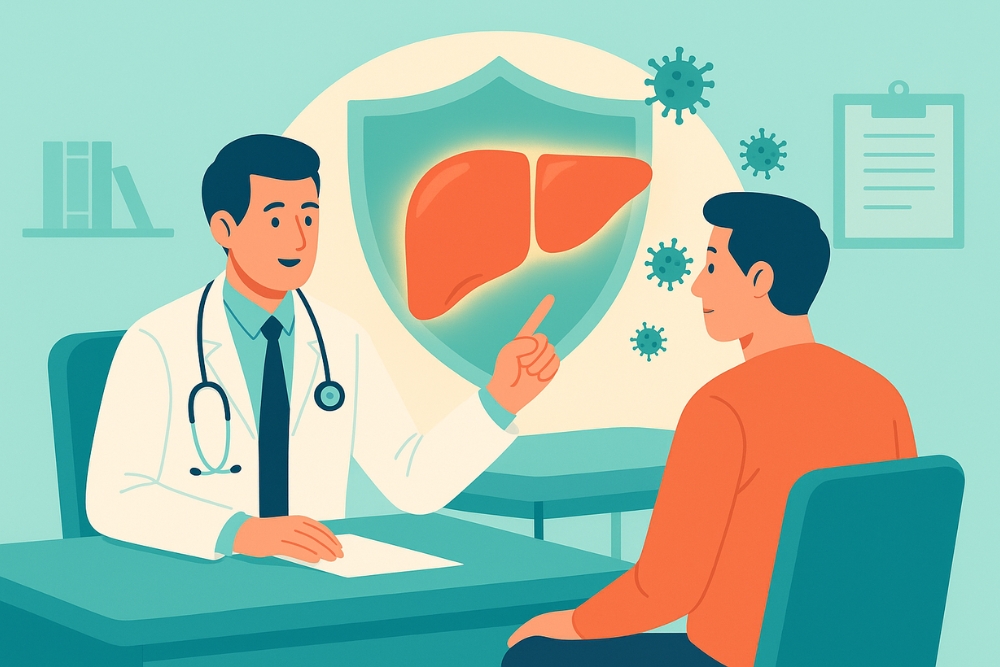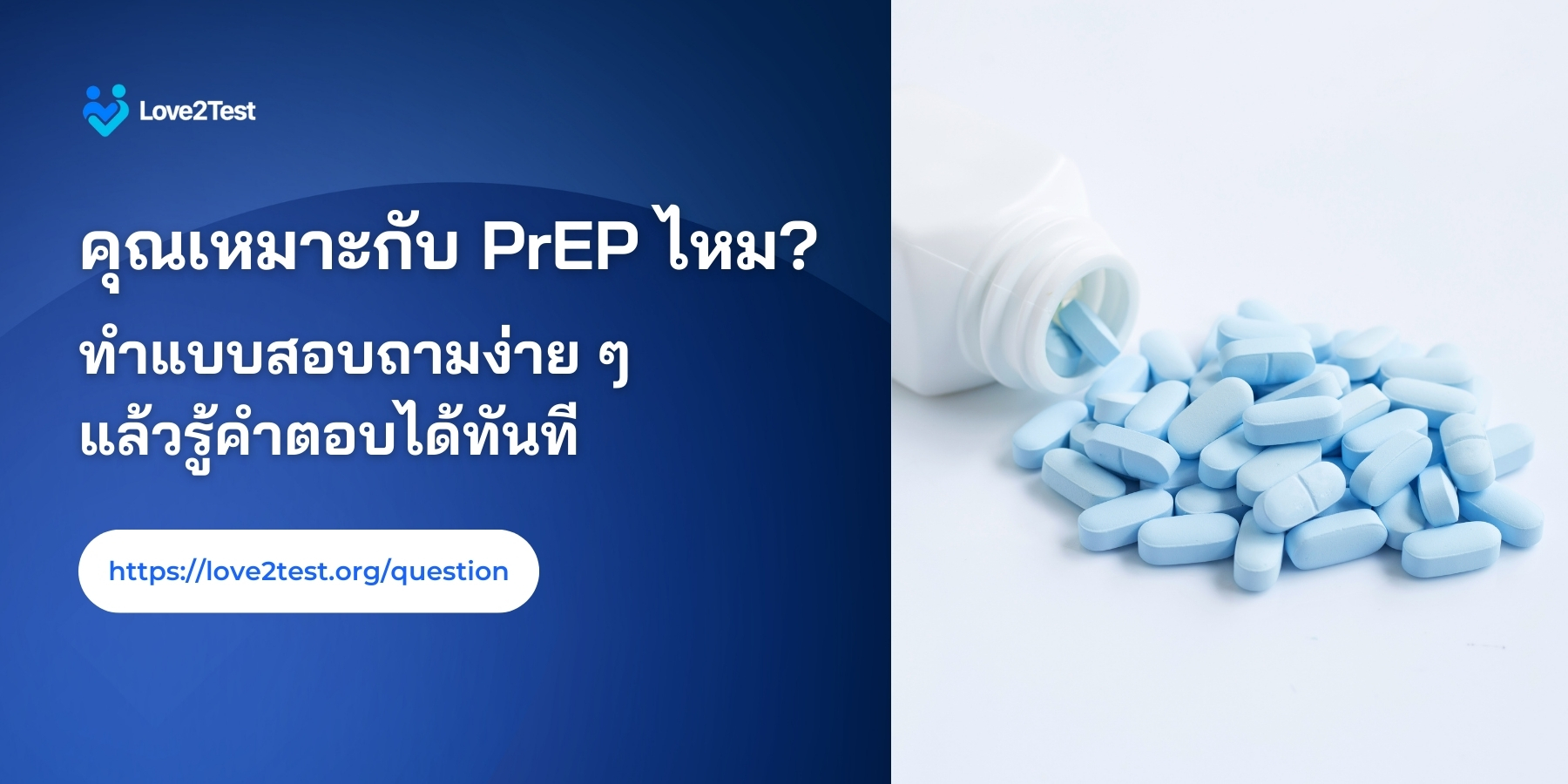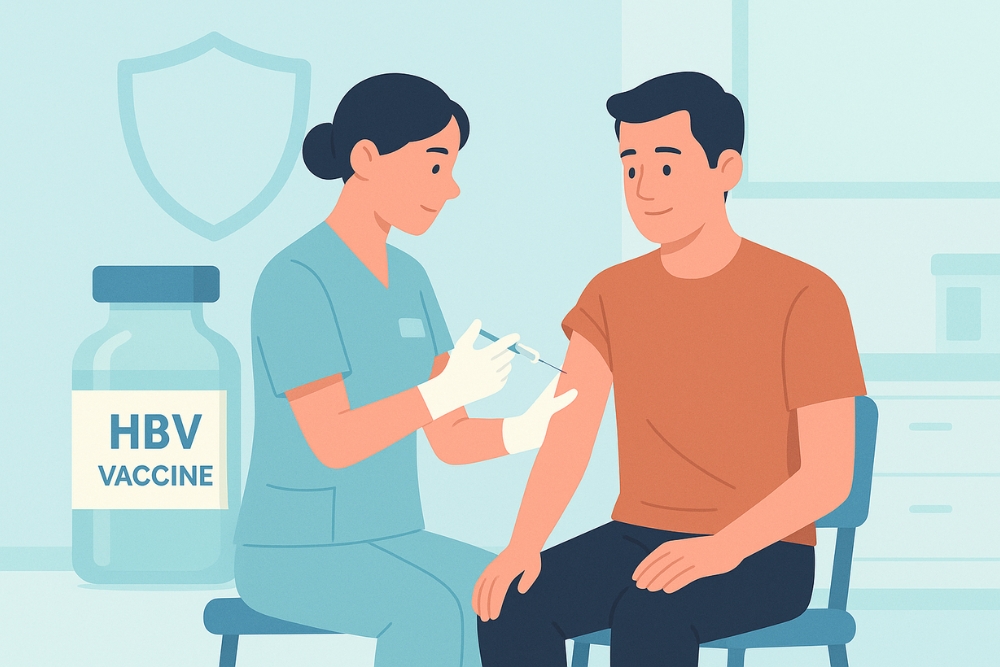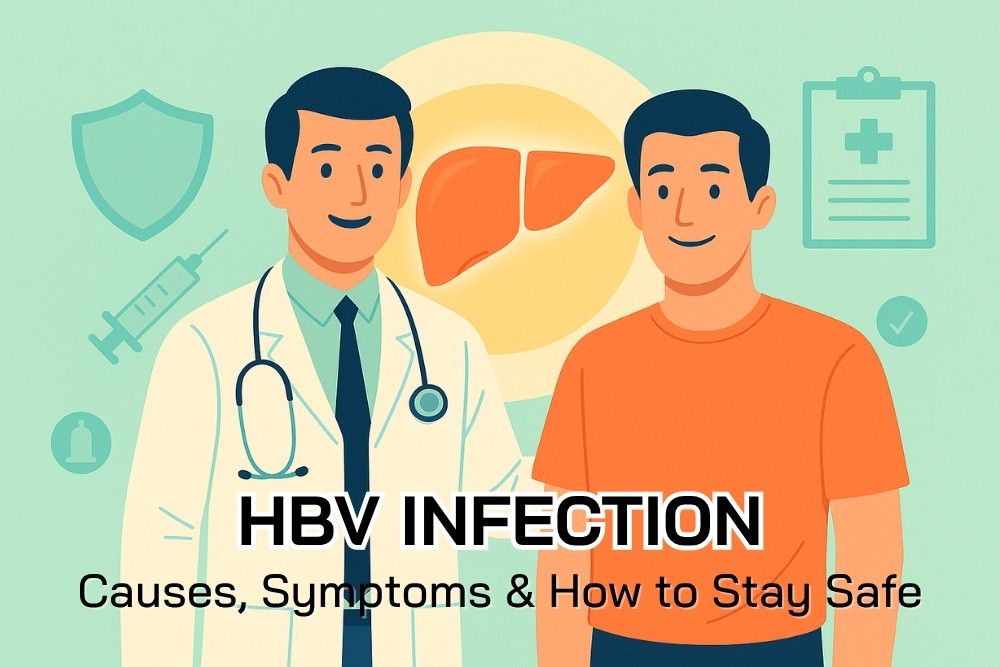HBV infection, caused by the Hepatitis B Virus, is one of the most serious bloodborne and body fluid–transmitted diseases that remains a global public health challenge—particularly in Southeast Asia, including Thailand. It is estimated that about 3% of the Thai population currently carries the virus, with most people unaware of their infection. This is because the disease often shows no noticeable symptoms in its early stages, until it progresses into the chronic phase when liver damage has already begun.
What makes HBV infection truly dangerous is its silent progression, which can eventually lead to liver cirrhosis or liver cancer if left untreated. The good news, however, is that HBV infection can be both prevented and detected early through proper awareness, vaccination, and regular health monitoring. This article will help you understand HBV infection more deeply—its causes, how it spreads, and what you can do today to protect yourself and your liver before it’s too late.
Causes of HBV Infection – Understanding the Source to Prevent Effectively
Hepatitis B is caused by infection with the Hepatitis B Virus (HBV), which can survive in blood and bodily fluids for a long time. This makes it easy to transmit through direct contact with infected fluids. The main routes of transmission include:

- Bloodborne transmission – such as sharing needles, tattoo equipment, or unsterilized medical instruments.
- Mother-to-child transmission – if a pregnant woman carries HBV, the baby may become infected during childbirth and remain a chronic carrier for life.
- Unprotected sexual contact – the virus can be present in semen, vaginal fluids, and small traces of blood, making transmission possible without condom use.
One of the most concerning aspects of HBV infection is that many people do not know they are infected. Early-stage symptoms are often mild or nonspecific—such as fatigue, nausea, or muscle aches—causing people to mistake them for the flu. Without proper blood testing, they may remain unaware that they carry the virus and could unintentionally transmit it to others.
In some cases, people with HBV may be treated for other illnesses using steroid-based medications, which suppress the immune system. When these medications are stopped suddenly, the virus can reactivate, leading to severe liver inflammation or even liver failure.
It is also important to dispel common misconceptions: HBV cannot be transmitted through saliva, kissing, or sharing food and utensils. The virus does not exist in saliva at levels high enough to cause infection. Therefore, daily interactions—such as eating together, talking, or working alongside someone with HBV—do not pose a risk of infection.
Understanding the true routes of transmission and separating myths from facts are essential first steps in effectively preventing the spread of HBV—for both yourself and those around you.

Symptoms of HBV Infection – Warning Signs You Shouldn’t Ignore
Hepatitis B infection often has a complex course, especially in its early stages. Many people may not realize they are infected, particularly those with chronic HBV infection, in which the virus gradually damages liver cells over several years. It is only when the liver becomes significantly affected that noticeable symptoms—such as yellowing of the eyes and skin (jaundice) or early signs of liver failure—begin to appear.

In cases of acute infection (Acute Hepatitis B), symptoms usually appear 1–4 months after exposure. Many patients recover naturally if their immune system is strong enough to fight off the virus. However, if the body fails to completely eliminate the virus, it can remain in the liver and progress into chronic infection (Chronic Hepatitis B), which may continue silently for years before developing into liver cirrhosis or liver cancer.
Below is a comparison between acute and chronic Hepatitis B to help illustrate the differences:
| Characteristics | Acute Infection | Chronic Infection |
|---|---|---|
| Onset period | Within 1–4 months after infection | Persists for more than 6 months |
| Common symptoms | – Yellow eyes and skin (jaundice) – Dark urine – Nausea and vomiting – Loss of appetite – Fatigue |
– Often no symptoms in the early phase – Chronic fatigue – Yellowing of the skin and eyes in later stages – Abdominal swelling or leg edema |
| Impact on liver health | The liver often recovers completely | Continuous liver damage leading to cirrhosis or liver cancer |
| Chance of complete recovery | High, especially in healthy adults with strong immunity | Low; the virus tends to remain and requires lifelong monitoring |
| Treatment approach | Symptomatic care and adequate rest | Antiviral medication to suppress the virus and regular liver function monitoring |
People with chronic HBV infection may remain symptom-free for many years, but the virus continues to damage liver cells, causing fibrosis that can eventually develop into cirrhosis and increase the risk of hepatocellular carcinoma (liver cancer). Therefore, regular liver health check-ups are highly recommended—especially for those with risk behaviors or a family history of Hepatitis B. Early detection is the most effective way to prevent serious complications and stop the disease before it’s too late.

Treatment for HBV Infection
Today, the treatment of Hepatitis B (HBV infection) has advanced significantly. Modern therapies can effectively reduce liver inflammation, slow disease progression, and lower the risk of liver cirrhosis or liver cancer. Although the disease cannot yet be completely cured in patients with chronic infection, consistent and appropriate treatment can suppress the virus to very low levels, minimizing damage to the liver and helping patients maintain good health.
In general, treatment can be divided into two main approaches:
1. Immune-Stimulating Injection Therapy
This treatment uses interferon-based medications such as Interferon-alpha or Pegylated Interferon. These drugs help stimulate the body’s immune system to better control and eliminate part of the virus.
- Dosage: Injected subcutaneously once a week
- Treatment duration: Typically 6 months to 1 year, depending on individual response
- Possible side effects: Fever, muscle aches, loss of appetite, or mild depression. Close medical monitoring is required throughout treatment.
Advantages: Interferon therapy may offer a higher chance of long-term viral control compared with oral medication in certain patients—particularly those who are otherwise healthy and whose virus has not developed resistance.
Limitations: Side effects can be significant, and the therapy requires careful supervision by a specialist physician.
2. Oral Antiviral Medication
Another standard approach is the use of antiviral drugs that suppress viral replication and prevent further liver damage. The most commonly prescribed medications include:
- Tenofovir disoproxil fumarate (TDF)
- Tenofovir alafenamide (TAF)
- Entecavir (ETV)
These medications must be taken daily as prescribed, without interruption. Stopping treatment abruptly may cause the virus to rebound and trigger acute liver inflammation.
Advantages: Oral antiviral therapy generally has fewer side effects than interferon injections. Most patients can live normal daily lives while taking these medications, provided that they undergo regular blood tests to monitor liver function and viral load (HBV DNA).
Cautions: Discontinuing the medication without medical advice can cause the virus to reactivate and worsen the infection.
Comparison of Treatment Options
| Treatment Method | Administration | Duration | Advantages | Precautions |
|---|---|---|---|---|
| Interferon injection | Subcutaneous injection once weekly | 6 months – 1 year | Potential long-term viral control without lifelong medication | Higher risk of side effects, requires close medical supervision |
| Oral antivirals (TDF, TAF, ETV) | Taken daily as prescribed | Long-term continuous therapy | Safer, fewer side effects, effective viral suppression | Stopping abruptly can cause viral flare-up |
Lifestyle and Long-Term Care
Beyond medication, lifestyle modification plays an important role in recovery and long-term health. Patients should:
- Avoid alcohol consumption, which accelerates liver damage.
- Refrain from using herbal or over-the-counter drugs that may affect the liver without consulting a doctor.
- Have regular health check-ups, including liver function tests and viral load monitoring, to evaluate treatment progress.
With proper medical care and healthy lifestyle habits, people living with HBV infection can lead long, safe, and fulfilling lives comparable to those without the disease.

Prevention of HBV Infection
Although Hepatitis B is a serious viral disease that can progress to liver cirrhosis or liver cancer in the long term, prevention remains the most effective and cost-efficient way to protect your liver. When practiced correctly, prevention can reduce the risk of infection almost entirely.
1. Get Regular Health Check-ups and HBV Screening
A blood test to detect the Hepatitis B surface antigen (HBsAg) and antibody (Anti-HBs) at least once a year helps you understand your HBV status early. If the virus is detected, timely treatment can begin. If you have not been infected, you can plan to receive the vaccine before exposure.
2. Complete the Full Hepatitis B Vaccination Series
Vaccination is the most effective way to prevent HBV infection. It consists of three doses — the first and second doses one month apart, and the third dose six months after the first. In Thailand, newborns receive the vaccine free of charge. Adults unsure about their immunity should get a blood test first to check their antibody levels before vaccination.
3. Practice Safe Sex Every Time
HBV can be transmitted through sexual contact. Using a condom every time you have sex is a basic yet highly effective prevention method. For people at higher risk — such as those with multiple partners or whose partner is infected — using PrEP (pre-exposure prophylaxis) in combination with condoms provides an added layer of protection.
4. Avoid Sharing Sharp or Personal Items
Because HBV can spread through blood, you should never share sharp or personal items such as razors, needles, ear-piercing tools, or manicure equipment that haven’t been properly sterilized. When visiting beauty salons or barbershops, choose establishments that follow hygiene standards and use sterilized equipment for every customer.
5. Choose Only Certified Tattoo or Piercing Studios
Before undergoing procedures involving skin penetration or blood exposure—such as tattooing, acupuncture, or piercing—make sure the tools are properly sterilized and single-use only. This greatly reduces the risk of HBV contamination.
6. Continue Monitoring and Treatment if Infected
If you test positive for HBV, it’s essential to see a doctor regularly for proper treatment and follow-up. Early medical intervention can significantly reduce the risk of cirrhosis and liver cancer, while consistent care helps maintain a good quality of life over the long term.
Related Article
Frequently Asked Questions About HBV Treatment
▶︎ It cannot be completely cured, especially in chronic cases. However, antiviral medications can effectively suppress the virus to very low levels, preventing further liver damage and reducing the risk of liver cirrhosis or liver cancer in the future.
▶︎ It depends on the viral load and the condition of the liver. Some patients may require long-term or even lifelong antiviral therapy to keep the virus under control. The doctor will determine the most suitable approach based on blood test results and liver function assessments.
▶︎ Injection therapy usually involves Interferon, which stimulates the immune system to fight the virus. Oral medications, such as Tenofovir (TDF, TAF) or Entecavir (ETV), work by inhibiting viral replication. Both treatments have different purposes, and the doctor will choose the most appropriate option based on each patient’s condition.
Q: Can patients stop taking the medication if they start feeling better?
▶︎ Absolutely not. Stopping medication abruptly can cause a sudden increase in the viral load, leading to acute hepatitis or even liver failure. Patients should always consult their doctor before changing or discontinuing any medication.
▶︎ Absolutely not. Stopping medication abruptly can cause a sudden increase in the viral load, leading to acute hepatitis or even liver failure. Patients should always consult their doctor before changing or discontinuing any medication.
▶︎ Yes, but they vary depending on the treatment method:
- Interferon injections may cause fever, fatigue, or mood changes such as mild depression.
- Oral antiviral drugs can sometimes affect the kidneys or bones over time. Regular blood tests and monitoring are necessary to ensure safety.
▶︎ If the viral load remains high, the patient may still be able to transmit the virus — even without symptoms. Therefore, patients should use condoms during sexual activity, avoid sharing sharp objects, and encourage family members to get tested and vaccinated against Hepatitis B.
Conclusion: Protect Yourself from HBV Infection Before It’s Too Late
Hepatitis B is often called a “silent threat” because it may show no symptoms in its early stages, yet it can cause serious long-term liver damage, including cirrhosis and liver cancer. Understanding this disease—its prevention, screening, and proper treatment—is essential for everyone.
Today, we have both highly effective vaccines and modern treatment options that can keep the virus under control. When detected early, most patients can live normal, healthy lives while greatly reducing the risk of complications. The key is to maintain consistent care: regular blood tests, using condoms during sexual activity, and avoiding the sharing of sharp or personal items that could transmit the virus.
Don’t wait until your liver shows warning signs—by then, it may be too late to reverse the damage. Start protecting yourself today through regular health check-ups and vaccination. These simple steps are the best way to keep your liver healthy and ensure a long, high-quality life.
Reference:
สาเหตุที่ทำให้เกิดโรคไวรัสตับอักเสบบี
โรคตับอักเสบบี เป็นเรื่องของทุกคนในครอบครัว
ไวรัสตับอักเสบบี ตัวการเสี่ยงก่อโรคมะเร็ง รู้ทันรักษาได้

